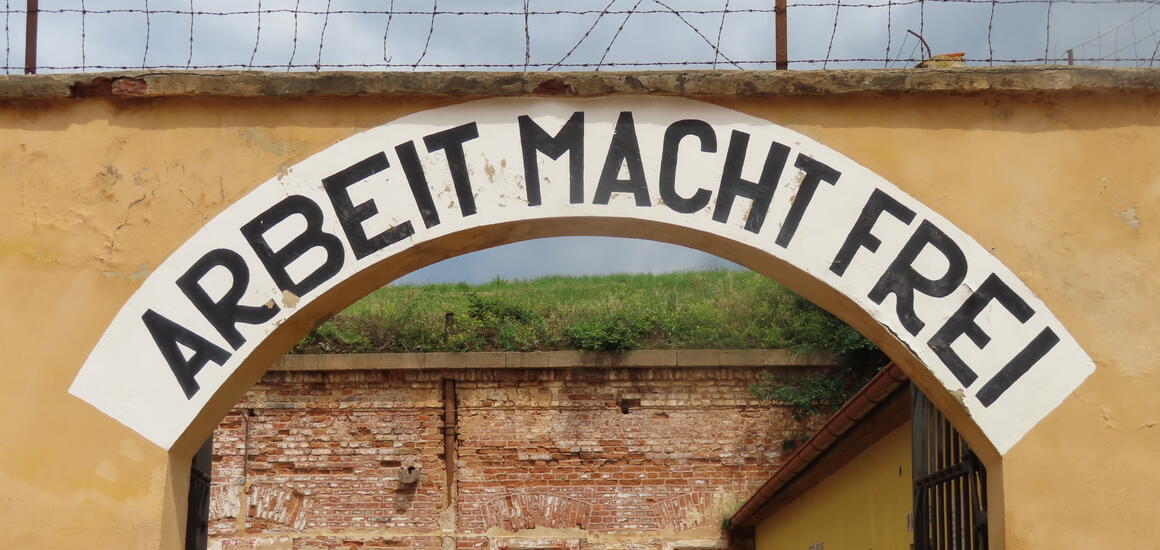Categories

DATE OF ENTRY: July 2024
COMMENTARY:
A relatively short drive from Prague, (off the motorway to Dresden), you will find the former transit camp of Terezín or Theresienstadt (in German)
Introduction
- Location: Terezín (Theresienstadt in German) is a small fortress town in the Czech Republic, about 60 kilometers north of Prague.
- Function: During World War II, Terezín was used by the Nazis as a ghetto and transit camp for Jews. It was unique in that it also served as a propaganda tool to deceive the international community about the true nature of the Nazi genocide.
Establishment
- Date: The Terezín Ghetto was established in November 1941.
- Initial Purpose: It was initially intended to concentrate Jews from Bohemia and Moravia before their deportation to extermination camps. Over time, it also received Jews from Germany, Austria, the Netherlands, Denmark, and other countries.
Structure and Conditions
- Division: Terezín consisted of two parts:
- The Large Fortress: This area housed the civilian population of Terezín.
- The Small Fortress: This area was used as a Gestapo prison and for political prisoners.
- Living Conditions: Overcrowding, inadequate sanitation, insufficient food, and harsh living conditions led to the spread of disease and high mortality rates. Despite the harsh conditions, the camp was presented as a "model ghetto" in Nazi propaganda.
Population
- Inmates: Approximately 150,000 Jews passed through Terezín between 1941 and 1945. At its peak, the camp held around 58,000 people, significantly more than its capacity.
Cultural Life and Propaganda
- Cultural Activities: Remarkably, Terezín had a rich cultural life with concerts, lectures, and theater performances organized by the inmates. Notable artists, musicians, and intellectuals were imprisoned there.
- Red Cross Visit: In June 1944, the Nazis staged a visit by the International Red Cross to Terezín, beautifying the ghetto and organizing cultural events to create a false impression of the living conditions. This deception was later exposed.
Deportations
- To Extermination Camps: Terezín served as a transit camp for Jews on their way to extermination camps such as Auschwitz, Treblinka, and others. Approximately 88,000 Jews were deported from Terezín to these camps, where most were murdered.
- Deaths in Terezín: Around 33,000 people died in Terezín due to the appalling living conditions, disease, and malnutrition.
Liberation and Aftermath
- Liberation: Terezín was liberated by the Soviet Army on May 8, 1945. At that time, around 17,000 inmates were found alive.
- Post-War: After the war, Terezín became a symbol of the Holocaust, and efforts have been made to preserve it as a memorial and museum. It serves as a place of remembrance for the victims of the Holocaust and as an educational site to promote awareness of the atrocities committed.
Memorial and Education
- Memorial: The Terezín Memorial (Památník Terezín) was established to honor the victims and educate future generations. It includes museums, exhibitions, and preserved historical sites.
- Educational Programs: The memorial organizes educational programs, seminars, and guided tours to teach about the Holocaust and the history of Terezín.
Terezín stands as a poignant reminder of the horrors of the Holocaust, reflecting both the inhumanity of the Nazi regime and the resilience and cultural spirit of those who were imprisoned there.


































Add new comment